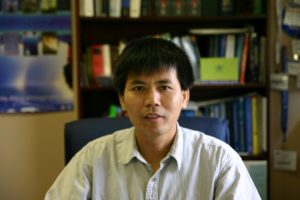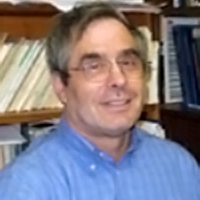Terrestrial arctic ecosystems store 25.33% of the world's soil organic carbon (OC), and large amounts of the long-sequestered OC is rapidly released by erosion along the ~2000 km coastline of northern Alaska. This eroded OC becomes available for biogeochemical cycling and makes a substantial, but poorly known, contribution to marine ecosystems and to CO2 and methane emissions to the atmosphere; released OC can potentially alter biogeochemical cycling, increase CO2 and methane emissions, contribute to climate warming, accelerate sea ice retreat, increase fetch and wave energy to exposed coasts, and ultimately further increase erosion rates and OC flux. While crude estimates of the flux of OC across the eroding coastline have been developed and are known to be affected by ground-ice stability, little is known about the transformation of terrestrial OC as it crosses the land/ocean interface. This team hypothesizes that the wave-washed foreshore zone is critical to the transformation of OC once it is released from storage through physical dispersion, leaching, and oxidation. How the bioavailability of OC is controlled by the age, size and composition of the organic matter, and how these factors relate to geomorphic environments that have influenced past soil development is fundamental to quantifying OC transformation. How much of this OC becomes bioavailable to marine ecosystems and is released to the atmosphere as it crosses this narrow, transient zone, and how much returns to long-term sequestration in nearshore sediments is critical to understanding carbon budgets of the Arctic Ocean and to assessing feedbacks associated with climate and sea-ice changes.
This project has four components designed to: 1) characterize the nature and abundance of soil OC and ground ice in relation to geomorphic environments; 2) estimate the total OC flux along the entire coast and develop empirical models to assess the vulnerability of the coast to increased erosion resulting from decreasing summer sea-ice; 3) determine the biogeochemical transformation and bioavailability of OC associated with various dissolved and particulate forms across the land/sea interface through field study and laboratory experimentation; and 4) integrate results to the pan-arctic scale through international collaboration. The study will involve extensive sampling at 50 sites along the entire Alaskan Beaufort Sea coast to develop precise estimates of erosion and OC flux. Intensive sampling at three primary sites along dominant coastline types will be conducted to evaluate the transformation of the eroded OC. Three secondary sites will be added to broaden the monitoring to other coastline types and to involve local communities in assessing coastal changes.
Project Location
Journal Publications
Dou, F., Yu, X., Ping, C.-L., Michaelson, G., Guo, L., and M.T. Jorgenson, "Spatial variation of tundra soil organic carbon along the coastline of northern Alaska", Geoderma, 154: 328-335 (2010), doi:10.1016/j.geoderma.2009.10.020.
Zhang, J.-Z., Guo, L. and C.R. Fischer, "Abundance and Chemical Speciation of Phosphorus in Sediments of the Mackenzie Delta, Chukchi Sea and Bering Sea: Importance of Detrital Apatite", Aquatic Geochemistry 16: 353-371 (2010), doi:10.1077/s10498-009-9081-4.
Dates
-Members
Lead Principal Investigator
Principal Investigator

Principal Investigator

